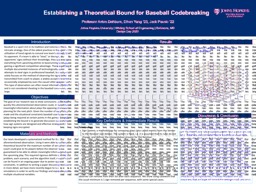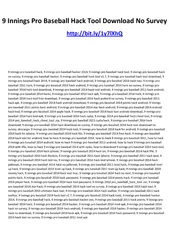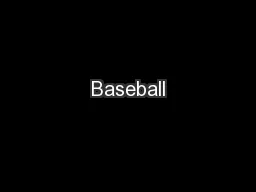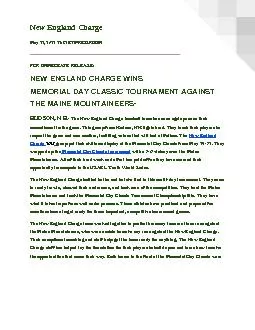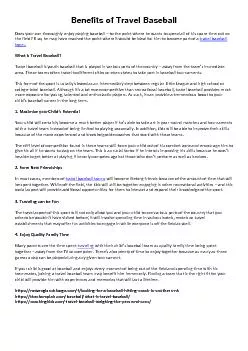PPT-Establishing a Theoretical Bound for Baseball Codebreaking
Author : osullivan | Published Date : 2023-06-21
Professor Anton Dahbura Ethan Yang 23 Jack Pausic 22 Johns Hopkins University Whiting School of Engineering Baltimore MD Design Day 2020 Baseball is a sport
Presentation Embed Code
Download Presentation
Download Presentation The PPT/PDF document "Establishing a Theoretical Bound for Bas..." is the property of its rightful owner. Permission is granted to download and print the materials on this website for personal, non-commercial use only, and to display it on your personal computer provided you do not modify the materials and that you retain all copyright notices contained in the materials. By downloading content from our website, you accept the terms of this agreement.
Establishing a Theoretical Bound for Baseball Codebreaking: Transcript
Download Rules Of Document
"Establishing a Theoretical Bound for Baseball Codebreaking"The content belongs to its owner. You may download and print it for personal use, without modification, and keep all copyright notices. By downloading, you agree to these terms.
Related Documents

